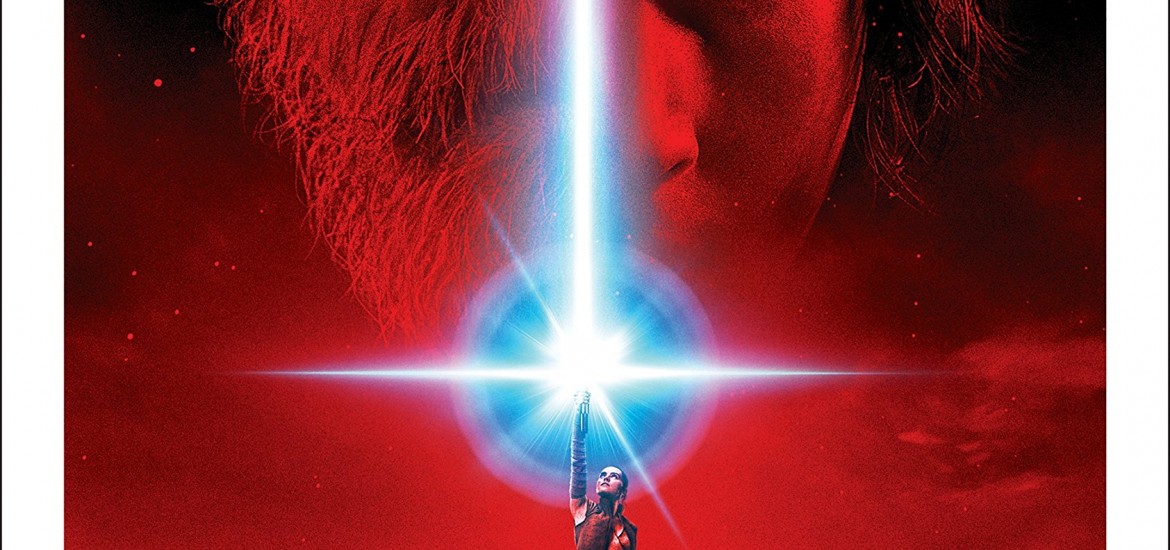The Last Jedi Novelization by Jason Fry is a good companion novel to The Last Jedi film. It is relatively short read that follows the film very closely with a few additions. Below is a list of 18 insights from the novelization that expand our understanding of the Star Wars Story.

- Luke’s dream.
The novel starts with a prologue of Luke on Ahch-to preceding Rey and Chewie’s arrival to the island. Luke dreams (prompted by the force) of an alternate reality of him on Tatooine had he not boarded the Millenium Falcon to save the princess. In the dream Luke feels a pang of guilt that there was something he was meant to do but didn’t. When he awoke, he recognized that the dream was inspired by the force, and was warning him that something significant was about to change in his life. Perhaps this nudge helped him eventually overcome his apathy and engage again with the force to help the resistance and his sister Leia after his years of hermitage.
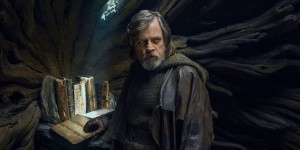
- Luke’s intentions with the Jedi library
The novel describes that Luke has tried multiple times to burn the Jedi library pas part of his plans to end the Jedi Order. But each time, he can’t seem to follow through, indicating insecurities in his resolve. In fact, when Rey initially confronts Luke, he was brooding over another failed attempt to destroy the Jedi texts. The novel also expands the conversation between Luke and Rey after she discovers the library, and Luke reveals to her his intentions to burn it down. This helps establish a stronger motive for Rey to take the books in an effort to protect them from Luke.
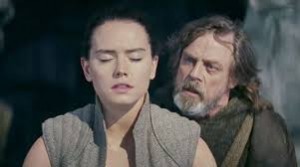
- Luke refers to Rey as his niece
In another bit of expanded dialogue between Rey and Luke, after she blasts a hole through one of the huts, Rey asks how Luke has explained her presence to the caretakers. He tells Rey that he referred to her as his niece. While this probably has no significance, I still like to hold out hope that somehow Rey is a child of Han and Leia, siblings with Kylo Ren, and is thought to be one of the younglings massacred in Kylo Ren’s destruction of Luke’s training temple. But I digress with my wishful thinking…

- Luke’s 3rd Lesson?
One of the first things I noticed and was upset about in the film was the lack of Luke’s 3rd lesson to Rey. He promised her 3 lessons, but only delivered 2. The novel depicts a new scene where Rey sees a boat approaching the island. Luke tells her that it consists of a clan of marauders that comes to the island each month to raid and plunder the caretakers’ village. Rey immediately prepares to intercept the marauders and protect the caretakers, but Luke stops her. Then he delivers what could be his third lesson, that a Jedi must only act when it is possible to maintain balance, even if that means people must die. Rey, not satisfied with his answer, rushes down to the port, lightsaber blazing, only to find that the marauders are actually guests of the caretakers in a monthly celebration. This addition gives helpful context to one of the main themes of the new trilogy: how to truly achieve balance, light and dark, without the chaos that has plagued the galaxy for millenia.
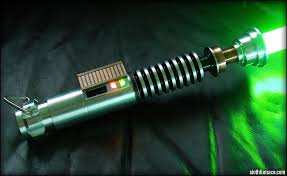
- Luke’s green lightsaber?
One of the biggest disappointments in the film was the absence of Jedi Master Luke’s green lightsaber. I remember being incredibly excited and immediately let down and confused when Luke confronted Kylo Ren on Crait. Since Anakin’s lightsaber had been destroyed, and Luke was holding a lightsaber, I thought it had to be the lightsaber of his own personal construction. But when the blue blade appeared, I was distraught and confused. After it was revealed that Luke’s presence on Crait was a figment of the force, I lost all hope and figured that his lightsaber must be lying discarded in the rusted cockpit of his submerged T-65 X-wing starfighter on Ahch-to. However, the epilogue of the novel depicts one of the caretakers, upon discovering Luke’s mysterious disappearance, placing Luke’s weapon, compass and “strange other gear” in storage. I have to believe that the “weapon” mentioned in the text refers to his green lightsaber. So even though we will never see Luke wield it, at least there is hope that it still exists and may be found.
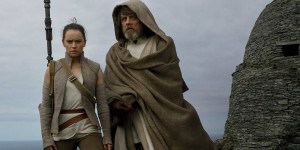
- Luke’s decision to leave with Rey
At one point in the novel, Luke has a change of heart and realizes the errors of his hermitage and that the force is pulling him to get involved and help his friends. He decides to leave with Rey, and goes to find her. This is when he finds Rey confiding in Kylo Ren about her experience in the sea cave mirror. As in the movie, he reacts fiercely and immediately changes his mind and demands that Rey leave the island.
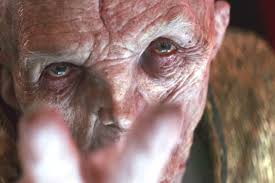
- Snoke’s backstory and the Contingency Plan
From the films, we know very little of Snoke’s origin. Other novels and pieces of cannon have described that the First Order arose from the emperor’s contingency plan in the event of his defeat. This novel expounds a bit more on the contingency plan, which included secret explorations of unknown space, establishing hyperspace routes in the unknown regions, and establishing a network of secret supply caches and research facilities unknown to the rest of the galaxy. It also described that Snoke was an unlikely candidate to rise up and become the Supreme Leader of the First Order. This clue doesn’t give us much, but it is something.
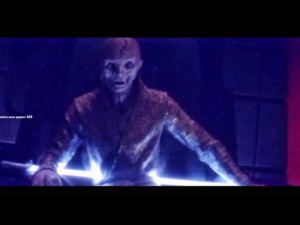
- Kylo Ren’s ability to defeat Snoke
A piece of criticism I often hear is the ease of which Kylo was able to kill Snoke. Fry gives more context to the struggle in the throne room, and describes how Rey’s resistance to Snoke’s force manipulations were unexpectedly powerful. We learn that Snoke’s use of the force to fling her about was met by fierce and strong opposition, and it took her being distracted to allow Snoke to succeed in thrashing her about. The same is true as Snoke forced Rey to kneel in preparation for her execution. Snoke was expending more energy in forcing her to maintain her pose than was evident by just watching the scene in the film. This distracted Snoke from Kylo’s true intent. Additionally, Snoke misread the change in Kylo’s temperament. Snoke could feel Kylo’s struggle with his emotions and judged him harshly for it as weak-minded. When Kylo learned that it was Snoke who manipulated both him and Rey in their mind-melds, he felt betrayed. So when Snoke presented Rey to Kylo and commanded him to execute her, Kylo’s shift from struggling with his emotions to his resolve to kill was misread by Snoke in his hubris as his apprentice finally “getting it.” Kylo was able to mask his true intent, because his hatred aligned so closely with what Snoke intended for him to feel against Rey. This additional context makes this struggle much more interesting and satisfying.
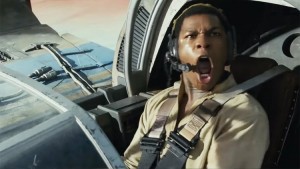
- Finn becoming part of the Resistance
It is easy to forget that Finn has had precious little time with the resistance, and much of that time he was unconscious in recovery. The novel does a great job giving more depth to Finn’s initial motives in the move (to rescue Rey and run away together), and his change of heart to truly becoming a part of the resistance. Fry points out in one part of the novel that Finn uses the inclusive term “we” when talking about the resistance, and this is the beginning of his turning point. This subtle character development makes his willingness to sacrifice his life on Crait to protect the resistance and his friends much more meaningful.
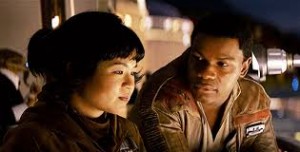
- Relationship of Finn and Rose
The film begins to explore the relationship between Finn and Rose, but Fry adds subtle nuances that help give a lot of understanding to this dynamic. After Rose learns of Finn’s intentions to abandon the resistance, and his seeming obsession with this girl Rey, she writes him off as a nuisance (and exposes her slight jealousy of the girl she has never met). But as their paths continue to intersect, she witnesses his transformation and becomes more enamored. The turning point in her attitude towards him is when he uses the term “we” to refer to the resistance. Reading these character nuances in the novel helped give more depth to this budding relationship.

- Rey’s relationship with the force
The film does a good job exposing how little Rey understands about the nature of the force during Luke’s first lesson, but the novel does a great job illuminating how her understanding progresses throughout the story. There are several key points of introspection where we learn that Rey is beginning to understand that the force isn’t hers to control, rather she is its instrument. One moment in particular is he reflection about coming to before Kylo Ren and realizing that she could kill him. But she feels that the force is pulling her in another direction, and has more in store for Kylo Ren. Her acceptance of the will of the force gives greater depth to the maturity she has developed through the story.
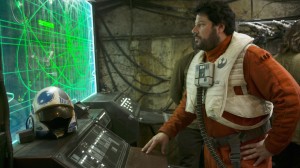
- Temmin (Snap) Wexley
Temmin Wexley is one of the main protagonists of Chuck Wendig’s Aftermath novel series, and makes several appearances in The Force Awakens as an X-wing pilot. His complete absence in the film was a slap in the face to his character and his fans. The only conclusion that I could conjure was that he met his fiery end in the hangar bay of the Raddus as he was preparing to engage with Kylo Ren’s Tie Fighter attack squadron. This ticked me off. But Fry redeemed Johnson’s oversight by explaining that Snap and other choice resistance pilots were sent on a mission to rally remaining republic forces and others sympathetic to the resistance’s cause immediately after the destruction of Starkiller Base. So, Snap isn’t dead and should show up in Episode IX.
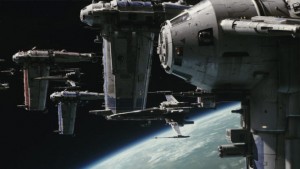
- Baffler Technology Explained
There were several key pieces of new technology that were hardly touched at all in the film. One crucial piece of technology was the baffler that Rose helped create to mask the signature of the Resistance bombling fleet. In the novel Star Wars: The Last Jedi: Cobalt Squadron, we learned a bit about Rose’s backstory as a crewmember on the Cobalt Hammer with her sister Paige. Rose developed the baffler as pseudo stealth technology to give the slow Starfortress bombers the ability to approach their targets undetected. In this novel, we learned that this technology was crucial to Vice Admiral Holdo’s plan to mask the transports’ escape from the Raddus to the planet Crait, a feat that would have been easily detected by the First Order without such a device.
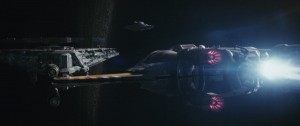
- Poe’s Experimental Afterburner
We also learned a bit more about the prototype afterburner that Poe had installed on his T-70 X-wing that enabled him to accelerate to top sub-light speeds never experienced by any starfighter previously. This allowed him to evade being targeted by First Order gunners and get close enough to make their cannons ineffective.
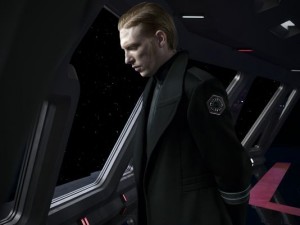
- Hux’s Hyperspace Tracker
In the novel, we learned more about Hux’s ability to track ships through hyperspace. The film made it sound like a single device was responsible for this ability. The problem was that the Supremacy wasn’t present during the initial engagement with the Resistance fleet, but Finn and Rose’s plan was to disable the breaker powering the tracking device on the Supremacy. This was lightly addressed when Finn explained to Poe that destroying the Supremacy wouldn’t disable their ability, as they would just track them from another ship. But this begs the question, did Hux have these devices installed on each ship? How could he have done so without Snoke knowing about it (and it was clear that Snoke was unaware by his reaction to the fleet jumping to lightspeed after the first engagement)? Fry explains that the ability was not a device, but rather a big data algorithm that could predict with incredible accuracy the destination of the hyperspace jump by analyzing the precise location and direction of departure, and cross referencing it against a thorough database of all hyperspace lanes to find the most likely destination match. So his “invention” wasn’t a device, but basically a complex algorithm.
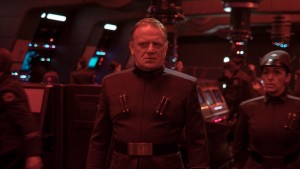
- Hux’s friction with other First Order officers
The novel exposed the dynamic between Hux and the other First Order leaders that was mostly passed over in the film. Many of the officers are seasoned leaders and remnants of the Empire. They are depicted as having the wisdom that only years of battle and strategy can produce, and as such resent Hux and his idealistic fervor that often defies time-tested strategy. A great example of this is the contention between Hux and Captain Canady (the captain of the dreadnought destroyed by Cobalt Squadron). Canady’s first reaction after emerging from hyperspace and encountering the resistance fleet in their evacuation was to scramble his squadron of Tie Fighters. We are told that he was specifically ordered by Hux not to do so, as a way to show the force of their fleet by using their “big guns” to cut the resistance base and fleet apart. Hux’s orders likely resulted in the dreadnought’s destruction, and give much more meaning to Canady’s angry muttering “five bloody minutes ago” after issuing the order to launch fighters to meet Poe’s threat.
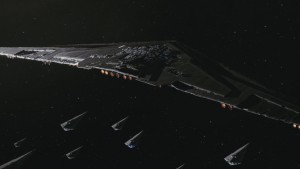
- The Supremacy is the First Order’s mobile capital
The Supremacy is our first exposure to a new class of starship, designated as a Mega-class Star Dreadnought. In the novel, we learn a bit more about the logistics of the First Order war machine. Snoke and Hux viewed a planetside HQ as a weakness, and instead opted to designate the Supremacy as the capital of the First Order. It contains foundries, refineries, weapons factories, training and housing facilities for entire legions of soldiers, and more. It is its own supply line, and is touted as being completely self sufficient. Understanding this makes its destruction a bit more satisfying.
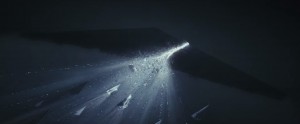
- Admiral Holdo flying the Raddus through the Supremacy
Some of the most frequent pieces of criticism against The Last Jedi was the pivotal moment that the Raddus jumped to lightspeed, dissecting the Supremacy and thereby giving Rey, Finn, Rose, and the resistance transports the chance to flee. Many claim this as a cop out, and argue that if this were a possible tactic, it would have been deployed in earlier films. Fry does a great job explaining how this “one in a million” maneuver was performed. Many fans misunderstand the complexities of traveling through hyperspace. In earlier episodes, Han explains to Leia how complex a lightspeed jump is in avoiding obstacles in the path. To ensure safety, there is a relatively small, finite number of hyperspace routes that have been charted and deemed as safe. Also, ships are built with processes to restrict a hyperspace jump without having a vetted set of coordinates and ensuring that there are no objects blocking its path. So in order for anyone to use a ship entering hyperspace as a Kamikaze weapon, the “target” would need to lie directly in the path of a charted hyperspace route, and the internal process preventing a collision would need to be disabled. When Poe had brief command of the Raddus’ bridge, he had to override many of the ships’ systems to gain access to enter in hyperspace navigational coordinates to jump the Raddus into hyperspace immediately after Finn and Rose shut down the power breaker. Holdo realized in her desperation that the entry point was directly through the First Order flagship, and the non-collision restriction had been overridden. The chances of these factors aligning were slim to none, which makes this pivotal moment of the plot that much more satisfying.
Did I miss anything? I’d love to hear about it in the comments section below!
Author: Jacob Burdis
Co-founder and COO at http://EmmersionLearning.com / Learning Enthusiast (PhD) / Language Guru / Star Wars Nut / Keyboardist / Husband and father of 3
